The life cycle of current generation video cards is coming to an end, so the most ambitious games are made with the expectation of future, more powerful hardware. Black Myth: Wukong is another major project after Alan Wake 2 and Cyberpunk 2077: Phantom Liberty, the creators of which did not limit themselves to the already familiar hybrid rendering, combining rasterization with ray tracing, but immediately switched to a fully traced lighting model. Here, path tracing is also superimposed on an extremely rich and detailed visual environment. In a recent review, we paid tribute to the gameplay of Black Myth: Wukong, and now we will select video cards that can show the game in all its glory.
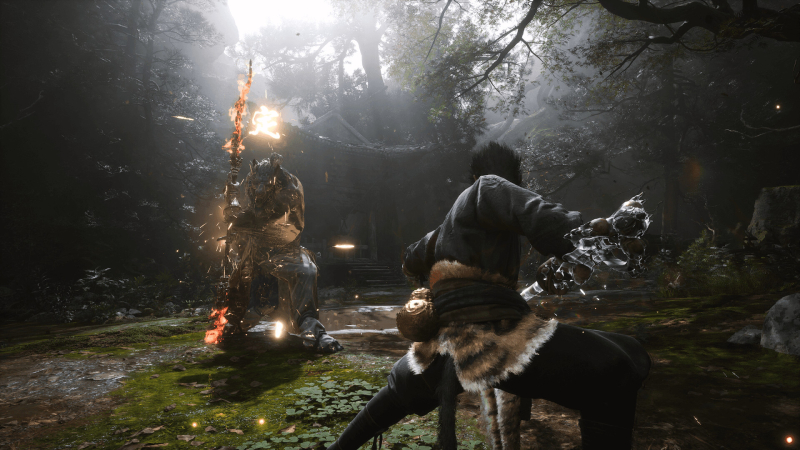
⇡#Graphics Quality Settings
Black Myth: Wukong is based on the Unreal Engine and uses a number of key technologies from the fifth version of the engine, including the most famous – the Lumen global illumination and point reflection rendering system, which is an exclusively software technology and is positioned as a gentle alternative to hardware ray tracing. At the same time, UE5 is capable of not only using ray tracing to render selected image components, but also fully simulating the propagation of light by path tracing, as previously done in Alan Wake 2 and Cyberpunk 2077: Phantom Liberty, although these projects, unlike Black Myth: Wukong are built on their own graphics engines.
The Black Myth: Wukong settings menu contains five detail modes, independent of ray tracing, ranging from “low” to “cinematic” graphics. “High” image quality is actually average in terms of system load and frame rate. Therefore, “low”, “high” and “cinematic” settings became the modes in which we tested the video cards, and the screenshots below show how the appearance of the game changes depending on the selected profile (without path tracing).
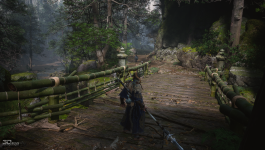
Low

High
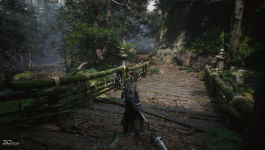
CInematic
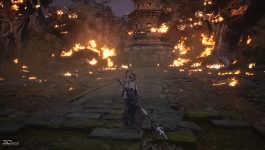
Low
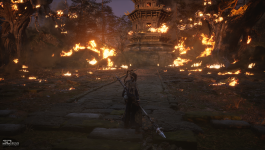
High
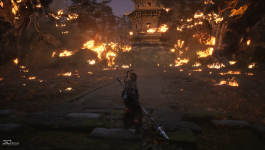
CInematic
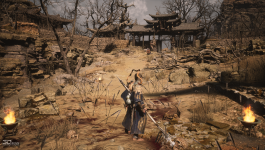
Low
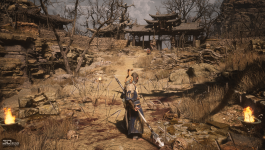
High
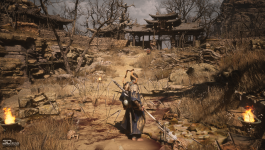
CInematic
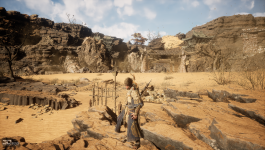
Low
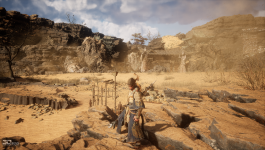
High
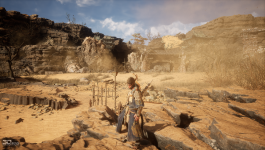
CInematic
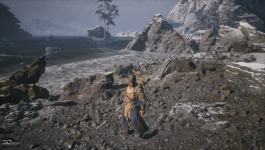
Low
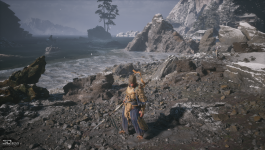
High
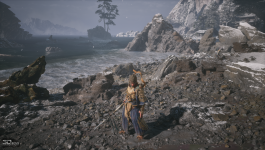
CInematic
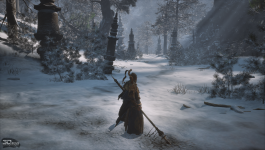
Low
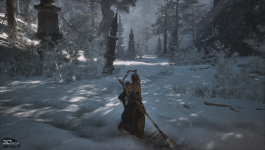
High
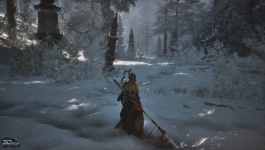
CInematic
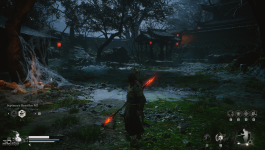
Low
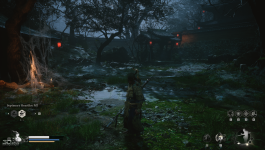
High
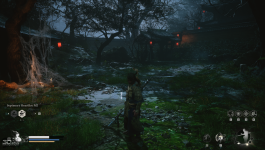
CInematic
The following images focus on the aspects of game graphics that traditionally benefit most from the move to ray tracing. You can clearly see how path tracing transforms closed spaces that are otherwise shrouded in too deep shadow or, conversely, look flat. It appears that Black Myth: Wukong’s environment designers had this kind of rendering model in mind from the start, with global illumination via Lumen as a backup mechanism. Path tracing allows small objects to cast detailed shadows that cannot be approximated by standard Ambient Occlusion algorithms. Rendering of reflections in the water surface occurs at full resolution. In addition, path tracing realistically simulates the refraction and refraction of light in the water column.
Even without path tracing, Black Myth: Wukong’s graphics are beyond the capabilities of most current-gen graphics cards, so the game offers several upscaling methods: DLSS, FSR, XeSS, and TSR, a solution built into Unreal Engine 5 that also performs full-screen anti-aliasing instead of the common TAA. When changing the final screen resolution, a scaling factor corresponding to the load is automatically applied, which can be freely varied in the range from 25 to 100%. The DLSS and FSR algorithms also support frame generation. But the Ray Reconstruction technology, which is part of the DLSS package and has proven itself in Alan Wake 2, is not used here.
The screenshots below show the results of scaling with a given initial frame size of 58% (after applying the settings the game brings it to 57%), which corresponds to the Balanced quality level in any of the available algorithms (motion blur is disabled). Black Myth: Wukong’s extremely detailed and lush environments put any upscaling method at a disadvantage, but of all the technologies, FSR produces the most gross visual artifacts (pixelation, ghosting, particle degradation), which are exacerbated by frame generation. TSR and XeSS provide slightly better results. Note that we assessed the quality of all upscaling technologies on the NVIDIA video card, which means that XeSS worked through DP4a instructions, and not “native” XMX, and simplified computing cores were used. But, given the low popularity of discrete Intel video cards, we are unlikely to be mistaken in assuming that XeSS most often runs on the wrong hardware for which it is designed.
DLSS, as usual, performs the best reconstruction of parts, but it is not without its sins. It is a pity that the screenshots do not convey the dynamics of the image, because movement to one degree or another provokes an annoying flicker of tree foliage when using each method. First of all, DLSS with frame generation suffers from this, but FSR suffers the least of all.
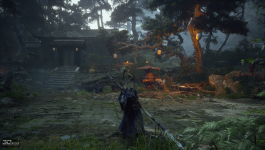
Native resolution (TSR)
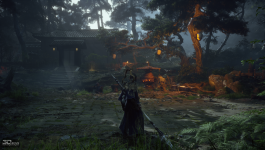
DLAA
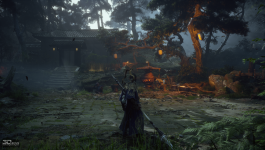
DLAA + frame generation
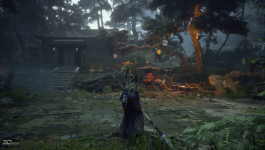
DLSS Balanced
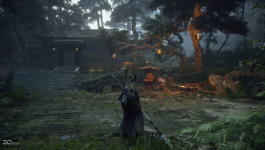
DLSS Balanced + frame generation
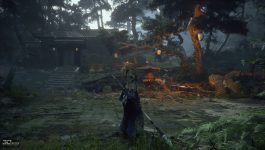
TSR Balanced
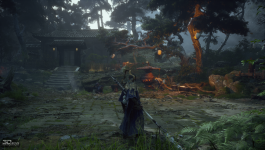
FSR Balanced
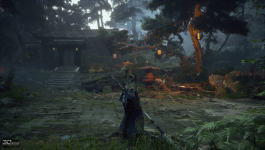
FSR Balanced + frame generation
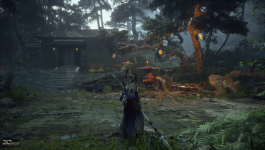
XeSS Balanced
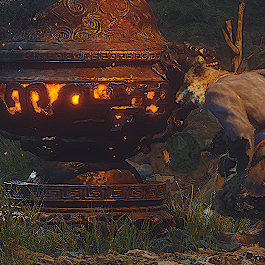
Native resolution (TSR)
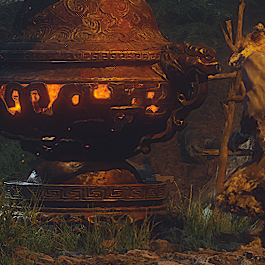
DLAA
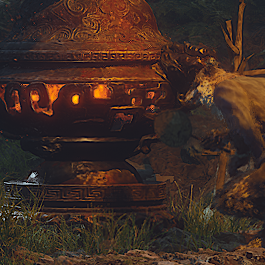
DLAA + frame generation
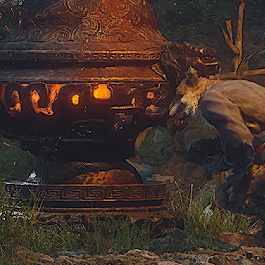
DLSS Balanced
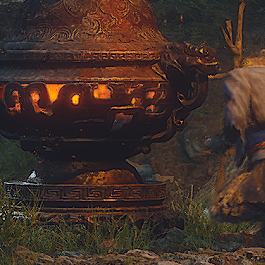
DLSS Balanced + frame generation
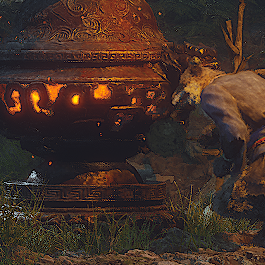
TSR Balanced
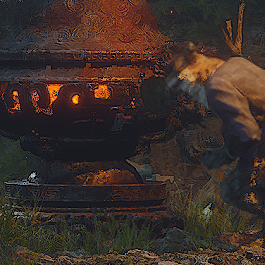
FSR Balanced
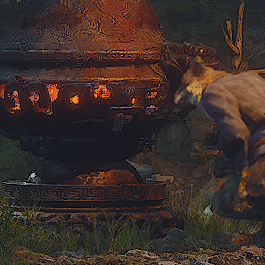
FSR Balanced + frame generation
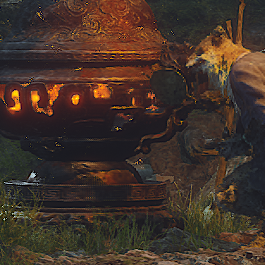
XeSS Balanced
A separate problem was the aggressive clarity filter, which can neither be adjusted nor disabled (at least by standard means; third-party modifications already exist). Because of it, the picture of Black Myth: Wukong looks grainy, upscaling artifacts come to the foreground, and the TSR dithering grid is clearly visible in the trees of the snowy forest, which, in turn, is highlighted by any scaling algorithm. The only salvation from this scourge, which, alas, is available only to owners of older NVIDIA models, is full-screen DLAA anti-aliasing, to which you will have to add frame generation in order to maintain a comfortable frame rate.
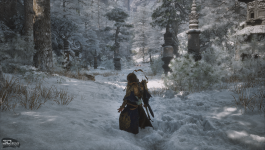
Native resolution (TSR)
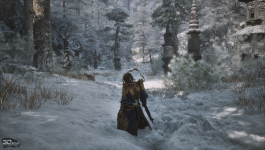
DLAA
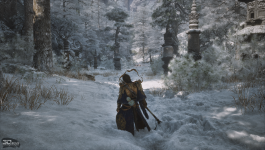
DLAA + frame generation
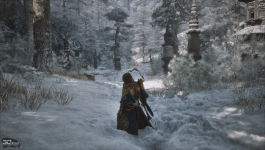
DLSS Balanced
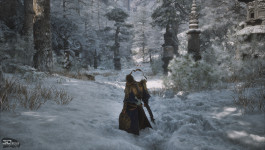
DLSS Balanced + frame generation
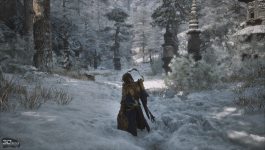
TSR Balanced
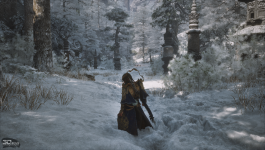
FSR Balanced
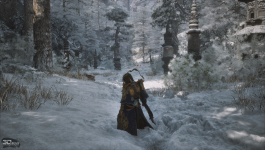
FSR Balanced + frame generation
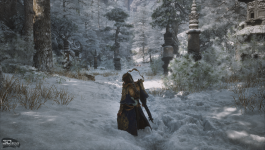
XeSS Balanced
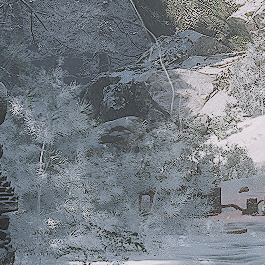
Native resolution (TSR)
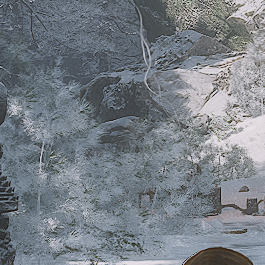
DLAA
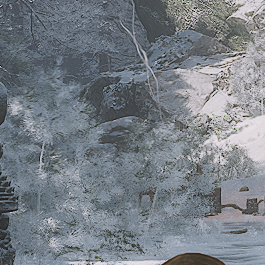
DLAA + frame generation
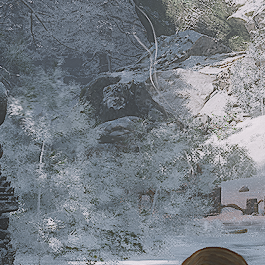
DLSS Balanced
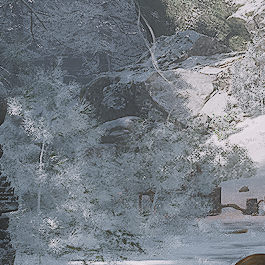
DLSS Balanced + frame generation
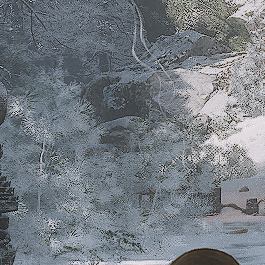
TSR Balanced
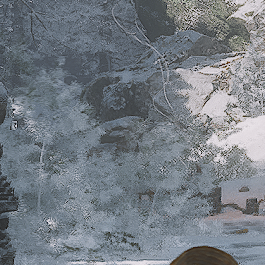
FSR Balanced
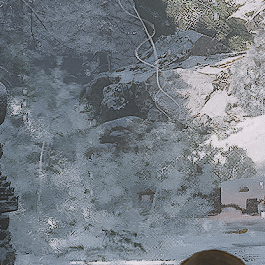
FSR Balanced + frame generation
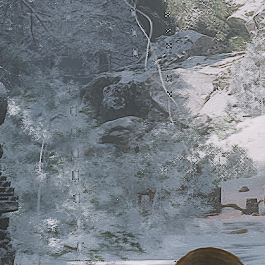
XeSS Balanced
As for the video memory requirements, contrary to our fears, Black Myth: Wukong does not consume VRAM as actively as, for example, Hogwarts Legacy, built on the fourth version of the Unreal Engine. With path tracing turned off, the game in testing took up from 7.5 to 9.7 GB of GPU memory at maximum settings at resolutions from 1080p to 4K. With path tracing, VRAM consumption increased to 9.2–12.1 GB. Taking into account the unprecedented load on the GPU, which the benchmark results show, these values are quite consistent with the configurations of accelerators with suitably powerful GPUs.
⇡#Test stand, testing methodology
Black Myth: Wukong has a built-in benchmark. But its duration is too long to test a lot of video cards with different graphics settings in a reasonable time, so we measured performance using the OCAT utility during a short walk through one of the initial locations of the game (the Guanyin Temple). The route is designed in such a way that the test results are close to the built-in benchmark.
The average and minimum frame rates are derived from the array of individual frame rendering times that OCAT writes to the results file. The average frame rate in the charts is the inverse of the average frame rendering time. To estimate the minimum frame rate, the number of frames formed in each second of the test is calculated. From this array of numbers, the value corresponding to the 1st percentile of the distribution is taken.
⇡#Test participants
- AMD Radeon RX 7900 XTX (1720/2499 MHz, 20 Gbps, 24 GB);
- AMD Radeon RX 7900 XT (1387/2394 MHz, 20 Gbps, 20 GB);
- AMD Radeon RX 7900 GRE (1270/2245 MHz, 18 Gbps, 16 GB);
- AMD Radeon RX 7800 XT (1295/2430 MHz, 19.5 Gbps, 16 GB);
- AMD Radeon RX 7700 XT (1700/2544 MHz, 18 Gbps, 12 GB);
- AMD Radeon RX 7600 XT (2029/2810 MHz, 18 Gbps, 16 GB);
- AMD Radeon RX 7600 (1875/2755 MHz, 18 Gbps, 8 GB);
- AMD Radeon RX 6900 XT (1825/2250 MHz, 16 Gb / s, 16 GB);
- AMD Radeon RX 6800 XT (1825/2250 MHz, 16 Gb / s, 16 GB);
- AMD Radeon RX 6800 (1700/2105 MHz, 16 Gb / s, 16 GB);
- AMD Radeon RX 6700 XT (2321/2581 MHz, 16 Gb / s, 12 GB);
- AMD RADEON RX 6600 XT (2064/2607 MHz, 16 Gb / s, 8 GB);
- AMD Radeon RX 6600 (1626/2491 MHz, 14 Gbps, 8 GB);
- AMD Radeon RX 6500 XT (2420/2825 MHz, 18 Gbps, 4 GB);
- AMD Radeon RX 5700 XT (1605/1905 MHz, 14 Gb / s, 8 GB);
- AMD Radeon RX 5700 (1465/1725 MHz, 14 Gb / s, 8 GB);
- AMD Radeon RX 5600 XT (1235/1620 MHz, 12 Gb / s, 6 GB);
- AMD Radeon RX 5500 XT (1607/1845 MHz, 14 Gb / s, 8 GB);
- NVIDIA GeForce RTX 4090 (2235/2535 MHz, 21 Gbps, 24 GB);
- NVIDIA GeForce RTX 4080 (2205/2505 MHz, 22.4 Gbps, 16 GB);
- NVIDIA GeForce RTX 4070 Ti (2310/2610 MHz, 21 Gbps, 12 GB);
- NVIDIA GeForce RTX 4070 (1920/2475 MHz, 21 Gbps, 12 GB);
- NVIDIA GeForce RTX 4060 Ti (2310/2550 MHz, 18 Gbps, 8 GB);
- NVIDIA GeForce RTX 4060 (1830/2460 MHz, 17 Gbps, 8 GB);
- NVIDIA GeForce RTX 3090 (1395/1695 MHz, 19.5 Gb / s, 24 GB);
- NVIDIA GeForce RTX 3080 Ti (1365/1665 MHz, 19 Gb / s, 12 GB);
- NVIDIA GeForce RTX 3080 (1440/1710 MHz, 19 Gbps, 10 GB);
- NVIDIA GeForce RTX 3070 Ti (1575/1770 MHz, 19 Gb / s, 8 GB);
- NVIDIA GeForce RTX 3070 (1500/1730 MHz, 14 Gb / s, 8 GB);
- NVIDIA GeForce RTX 3060 Ti (1410/1665 MHz, 14 Gb / s, 8 GB);
- NVIDIA GeForce RTX 3060 (1320/1837 MHz, 15 Gb / s, 12 GB);
- NVIDIA GeForce RTX 3050 (1550/1780 MHz, 14 Gbps, 8 GB);
- NVIDIA GeForce RTX 2080 Ti Founders Edition (1350/1635 MHz, 14 Gb / s, 11 GB);
- NVIDIA GeForce RTX 2080 SUPER (1650/1815 MHz, 15.5 Gb / s, 8 GB);
- NVIDIA GeForce RTX 2080 Founders Edition (1515/1800 MHz, 14 Gb / s, 8 GB);
- NVIDIA GeForce RTX 2070 SUPER (1605/1770 MHz, 14 Gb / s, 8 GB);
- NVIDIA GeForce RTX 2070 Founders Edition (1410/1710 MHz, 14 Gb / s, 8 GB);
- NVIDIA GeForce RTX 2060 SUPER (1470/1650 MHz, 14 Gb / s, 8 GB);
- NVIDIA GeForce RTX 2060 (1365/1680 MHz, 14 Gb / s, 6 GB);
- NVIDIA GeForce GTX 1660 Ti (1500/1800 MHz, 12 Gb / s, 6 GB);
- NVIDIA GeForce GTX 1660 SUPER (1530/1830 MHz, 14 Gb / s, 6 GB);
- NVIDIA GeForce GTX 1660 (1530/1785 MHz, 8 Gb / s, 6 GB);
- NVIDIA GeForce GTX 1650 SUPER (1530/1770 MHz, 8 Gb / s, 4 GB);
- Intel Arc A770 (2100/2400 MHz, 17.5 Gbit/s, 16 GB);
- Intel Arc A750 (2050/2400 MHz, 16 Gbps, 8 GB).
Note In parentheses after the names of the video cards, the base and boost frequencies of the GPU are indicated according to the specifications of each device.
As in previous mainstream graphics card tests, we grouped the measurement results according to screen resolution and graphics detail. In each of the three modes (1920 × 1080, 2560 × 1440, 3840 × 2160), a test was performed with low (Low profile), high (High profile) and maximum (Cinematic profile) quality settings.
If a video card is missing from the chart at a certain resolution, this means that a) with higher graphics quality, the device already provides an average frame rate of 60 FPS and higher; b) the device did not reach 30 FPS at a given combination of resolution and detail. Thus, for each video card, a range of settings is determined between “barely suitable” and “no need to reduce quality.”
⇡#1920 × 1080
Already at 1080p resolution, only four test participants finished the Black Myth: Wukong benchmark with an average frame rate of at least 60 FPS at maximum image quality (excluding ray tracing): Radeon RX 7900 XT and XTX, GeForce RTX 4080 and GeForce RTX 4090. List of devices in The range from 30 to 60 FPS is much wider: the minimum performance is provided by the Radeon RX 6600 XT, Radeon RX 7700 XT, GeForce RTX 2080 SUPER, GeForce RTX 3060 Ti and the basic version of the GeForce RTX 4060. None of the Intel Arc models, including the A770 with 16 GB VRAM, could not overcome the 30 FPS threshold at maximum speed.
At high graphics settings, NVIDIA 40-series accelerators, starting with the GeForce RTX 4060 Ti, and 30-series, starting with the GeForce RTX 3070, as well as the GeForce RTX 2080 Ti can be calculated at a frame rate of 60 FPS. Among AMD devices, the Radeon RX 6700 XT and Radeon RX 7700 XT have sufficient performance. A compromise frame rate of 30 FPS is guaranteed by the “red” video cards Radeon RX 5600 XT, Radeon RX 6600, Radeon RX 7600 XT and the “green GeForce GTX 1660 SUPER, GeForce RTX 3050 and GeForce RTX 4060. Older Intel Arc models (A750 and A770) too are in the zone from 30 to 60 FPS.
Finally, with low image quality, inexpensive models of the current (GeForce RTX 4060 and Radeon RX 7600 XT) and previous (GeForce RTX 3060 and Radeon RX 6600) generations, along with the Radeon RX 5700 and the basic version of the GeForce RTX 2060, reached a comfortable frame rate. At 60 FPS. Intel’s flagship video card, the Arc A770, has finally been released. Although Black Myth: Wukong is an extremely demanding game at maximum speed, in the “potato” mode the detail is reduced so much that low-power video cards such as the Radeon RX 5500 XT, Radeon RX 6500 XT and GeForce RTX 1650 SUPER reached the 30 FPS mark. The results of the GeForce RTX 3050 and Intel Arc A750 tend to 60 FPS, but do not exceed the critical mark.
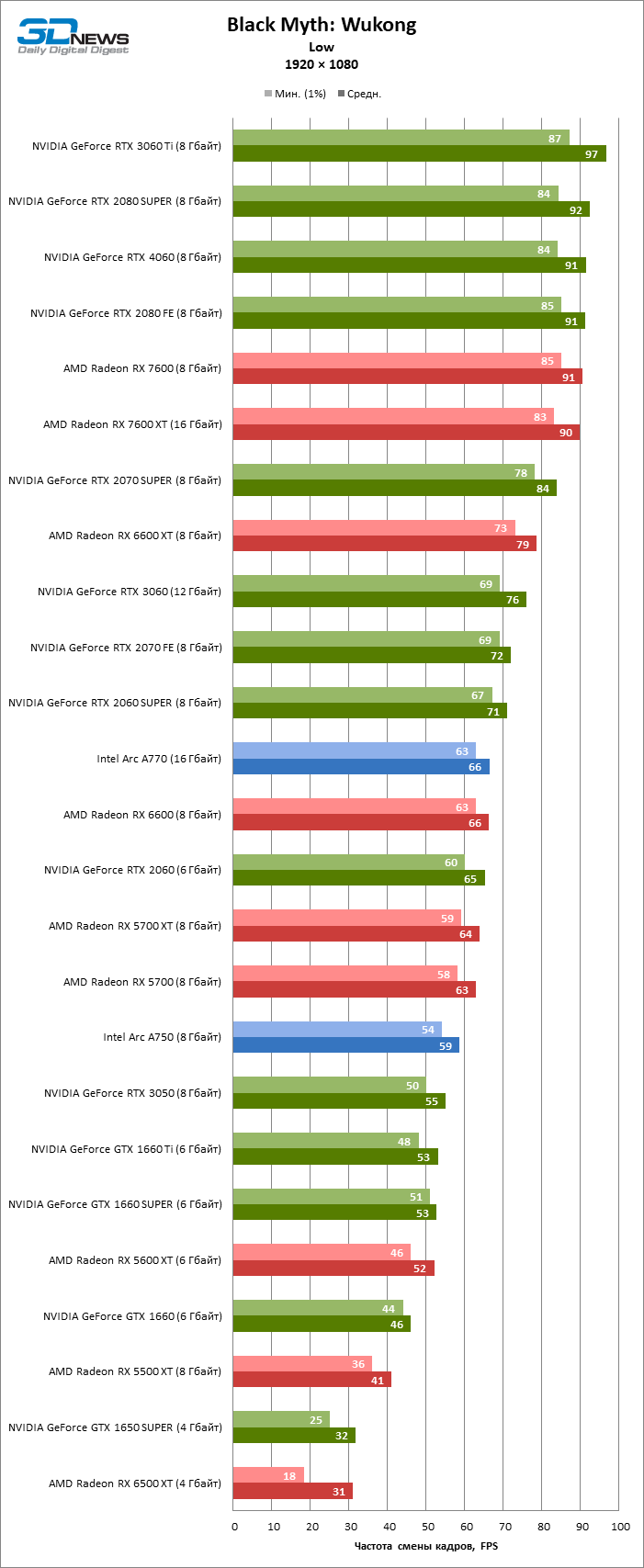

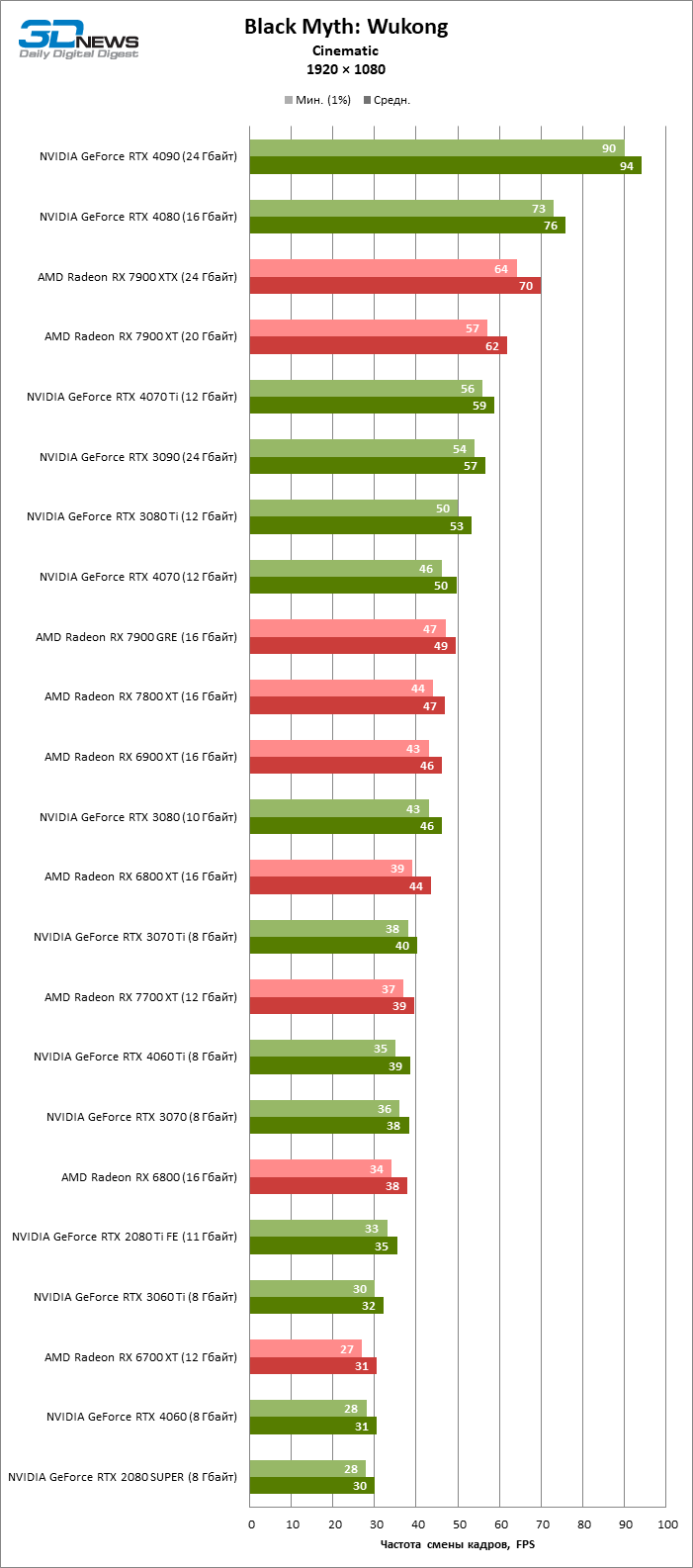
⇡#2560 × 1440
Gaming in 1440p mode without upscaling at a high frame rate is available only to owners of the GeForce RTX 4090 and, with a stretch, the GeForce RTX 4080, which lags behind the flagship by 16 FPS. The Radeon RX 7900 XTX also lacked 6 FPS to reach the coveted 60. Even in order to get a compromise framerate of 30 FPS, you need a fairly powerful video card at the level of the Radeon RX 6800, Radeon RX 7700 XT, GeForce RTX 3070 Ti and GeForce RTX 4070.
With high detail, frame rates of 60 FPS and higher were demonstrated by high-performance models of the previous generation (GeForce RTX 3080 and Radeon RX 6800 XT) and corresponding representatives of the current line (GeForce RTX 4070 and Radeon RX 7800 XT). The range from 30 to 60 FPS is opened by the Radeon RX 7600, GeForce RTX 4060, Intel Arc A770, as well as a number of formally outdated video cards: Radeon RX 6600 XT, GeForce RTX 2070 and the basic version of the GeForce RTX 3060.
With low graphics quality, users of the Radeon RX 7700 XT, GeForce RTX 4060 Ti or Radeon RX 6700 XT and GeForce RTX 3060 Ti can expect a solid 60 FPS. Among all the earlier devices, only the GeForce RTX 2080 Ti has the necessary computing power. A compromise frame rate of 30 FPS is provided by the Radeon RX 7600 XT and GeForce RTX 3050, as well as the Radeon RX 5600 XT, Radeon RX 6600 and even the GeForce GTX 1660 SUPER. The Intel Arc A550 occupies the middle of the range between 30 and 60 FPS.
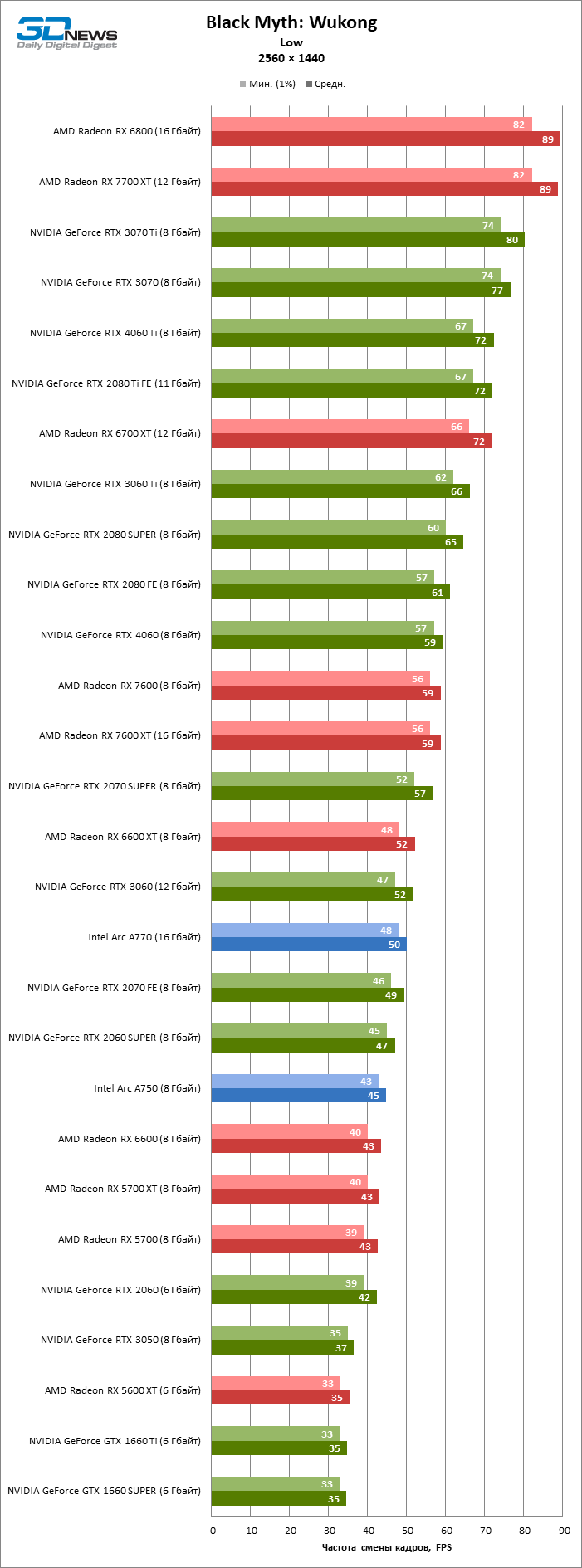
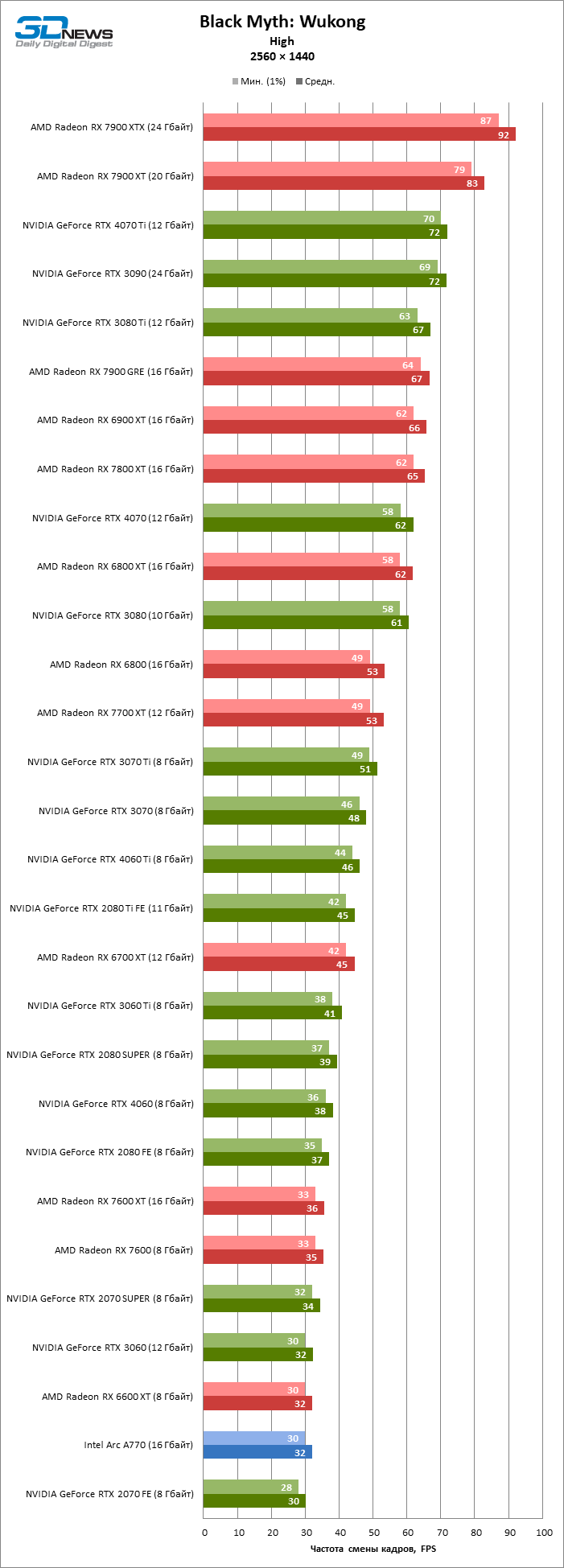

⇡#3840 × 2160
In native 4K resolution with maximum graphics quality, even the GeForce RTX 4090 stopped at 46 FPS, while the GeForce RTX 4080 and Radeon RX 7900 XTX are content with a frame rate of 33–34 FPS. As a result, all other test participants did not even pass the minimum standard of 30 FPS.
The transition from maximum to high detail settings allowed the GeForce RTX 4090 to break beyond 60 FPS, which the GeForce RTX 4080 and Radeon RX 7900 XTX still cannot boast of. Even to get 30 FPS, you need a no less powerful accelerator than the GeForce RTX 3070 Ti, GeForce RTX 4070, Radeon RX 6800 and Radeon RX 7800 XT.
With low graphics quality in 4K, the Radeon RX 7900 GRE, GeForce RTX 3080 Ti and GeForce RTX 4070 Ti crossed the 60 FPS line.
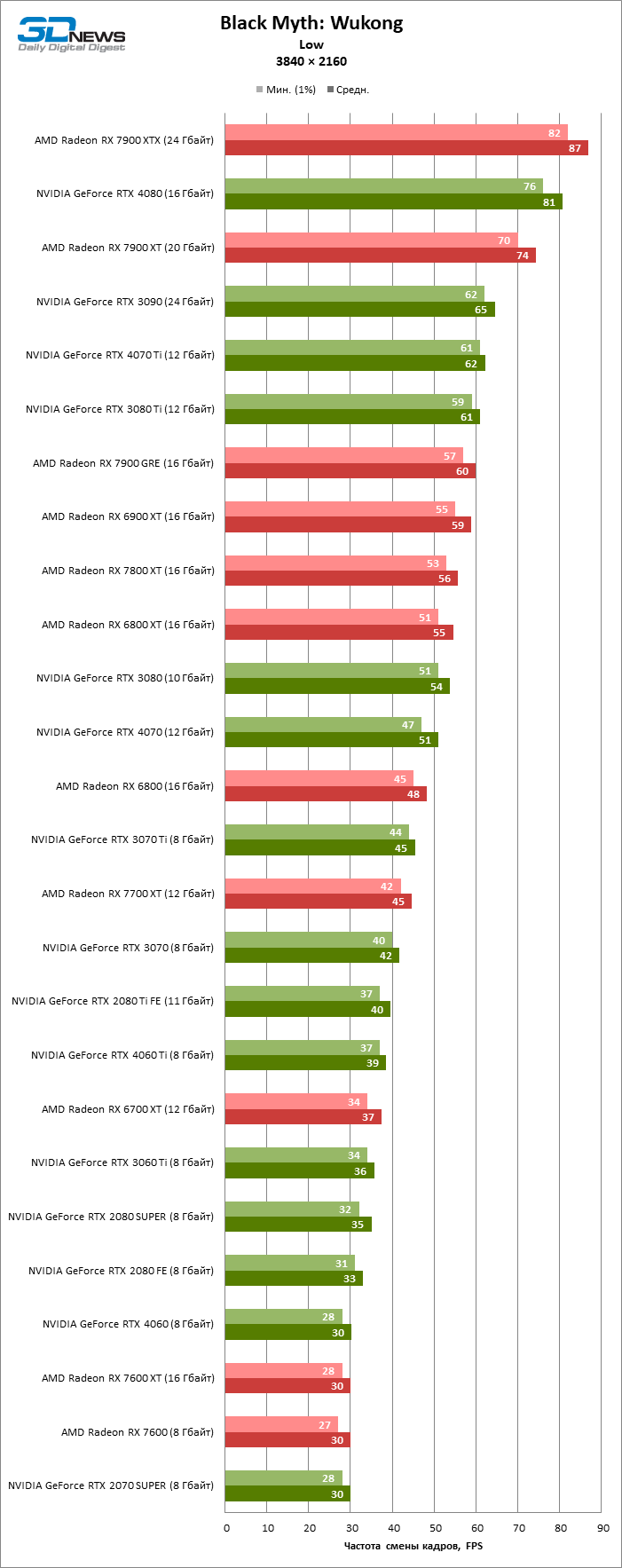
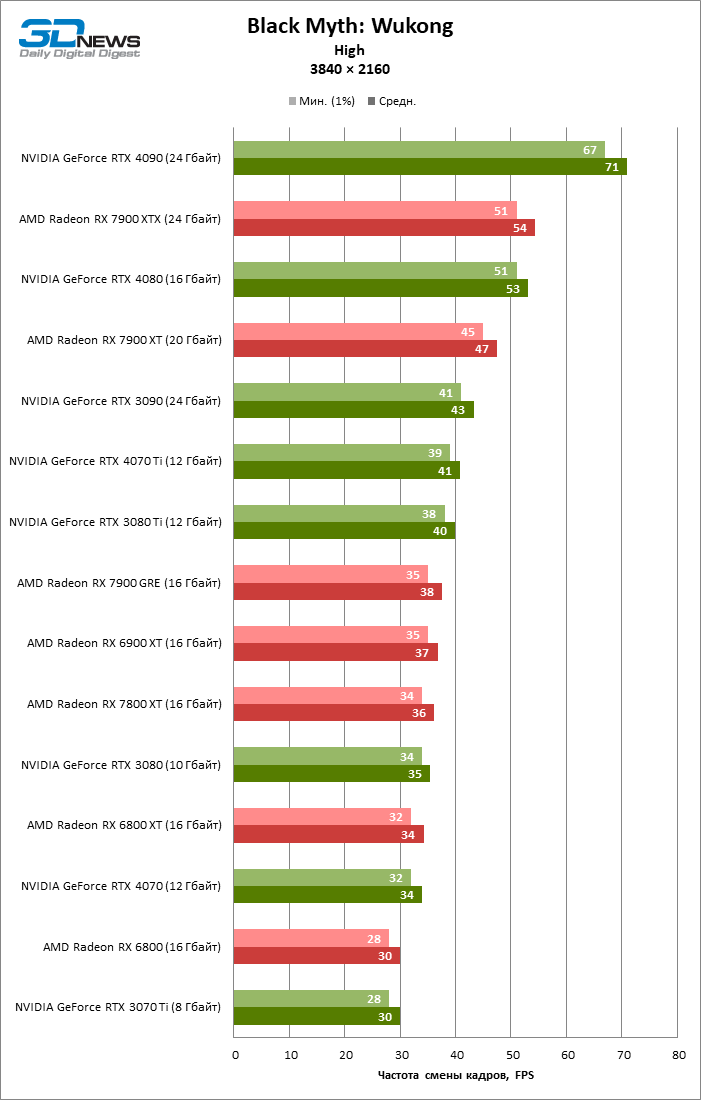
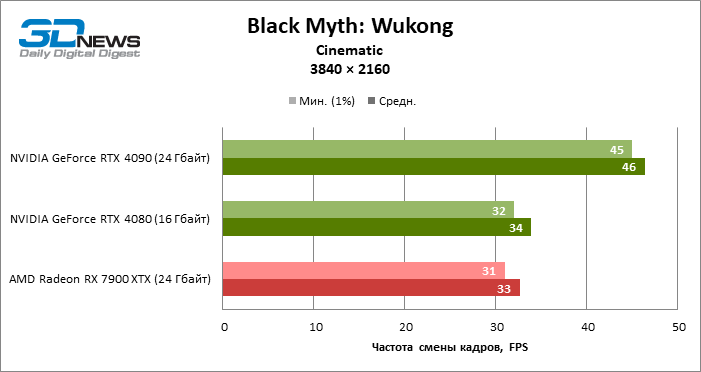
⇡#Ray traced tests
The ray tracing option in Black Myth: Wukong is called NVIDIA Full Ray Tracing for a reason. In this case, the entire lighting model is implemented using path tracing, so the benchmark results are very similar to those we got in last year’s Cyberpunk 2077 tests, also with path tracing. The GeForce RTX 4090 was the only video card that reached a frame rate of 60 FPS without frame scaling, and then only at 1080p resolution. The ray tracing logic in AMD GPUs does not have the functionality or bandwidth adequate for such a load. As a result, even the flagship of the “red” line, the Radeon RX 7900 XTX, is content with a modest result of 15 FPS (on par with the GeForce RTX 2080 Ti!).
It is noticeable that in terms of path tracing, the 40th GeForce series has made a big step forward in relation to older NVIDIA devices. The once mighty GeForce RTX 3090 was ahead of not only the GeForce RTX 4070 Ti, but also the base version of the RTX 4070, and by a wide margin.
As for Intel video cards, the Arc A770 is on par with the Radeon RX 7800 XT, which is unimaginable in rasterized games. Alas, we are talking about a critically low frame rate of about 10 FPS.
On the graph with test results in 1440p mode there is only one red line, which belongs to the Radeon RX 7900 XTX – again with a result of 10 FPS. GeForce RTX 4080 and GeForce RTX 4090 broke through the 30 FPS limit, but comfortable gaming is no longer possible without upscaling. Finally, at 4K resolution, even a system with a GeForce RTX 4090 dropped in performance to 22 FPS and needs frame scaling.
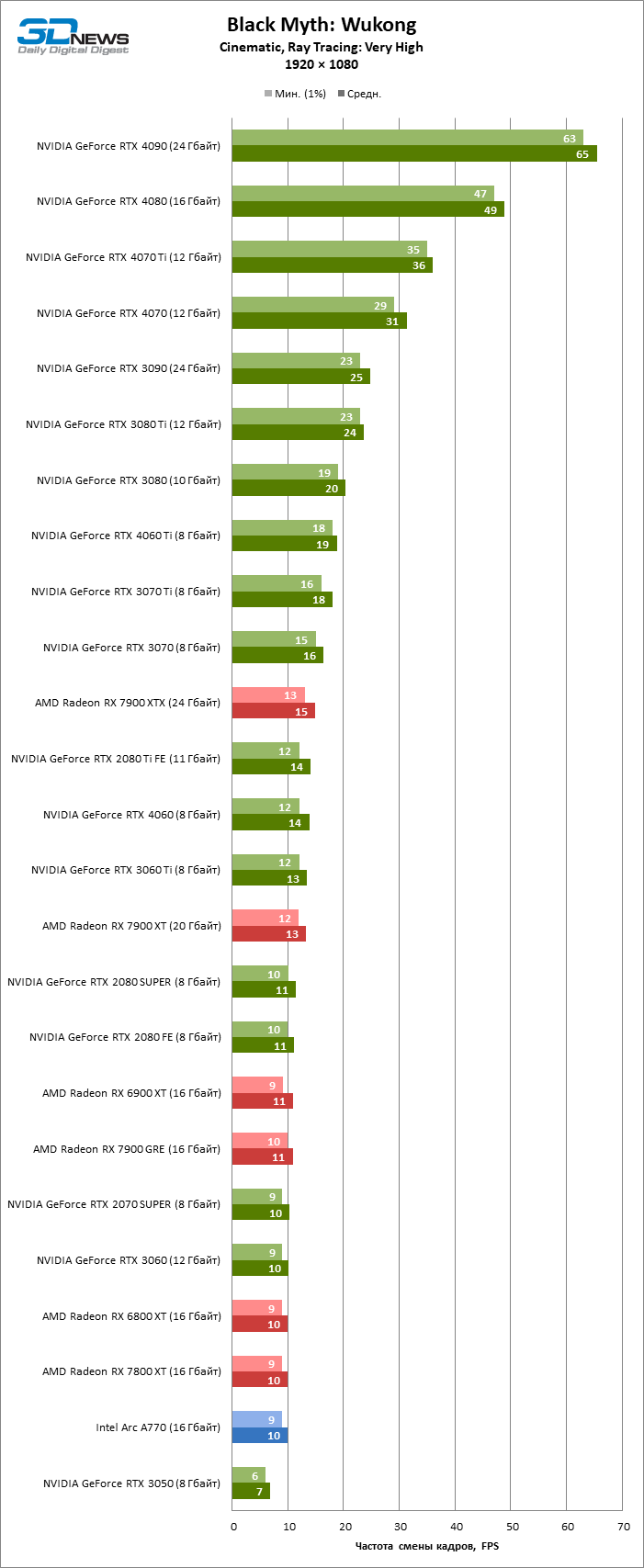
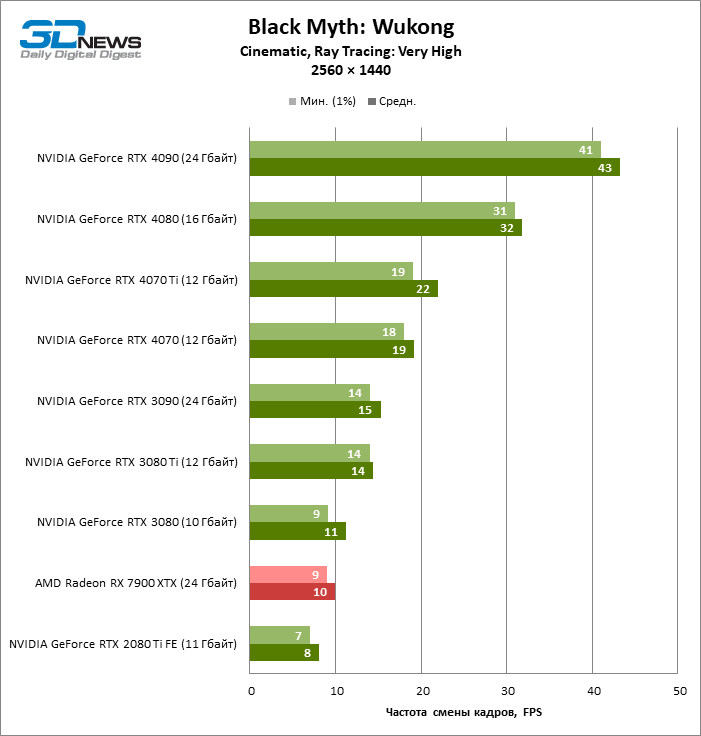
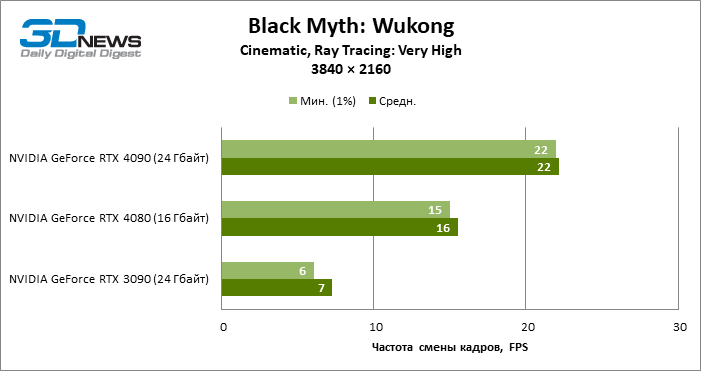
⇡#Tests with ray tracing and frame scaling
All graphics cards capable of ray tracing were tested with a native upscaling method – DLSS for NVIDIA accelerators, FSR for AMD and XeSS for Intel Arc – and a scaling factor that corresponds to the Balanced preset in any of the three technologies. The frame generation option was not used.
Thanks to upscaling in 1080p mode, the frame rate on the GeForce RTX 4090 exceeded a hundred FPS, and the GeForce RTX 4070 reached 60, which is still inaccessible to the GeForce RTX 3090. As expected, upscaling helped the Radeon RX 7900 XTX gain a foothold at the 30 FPS mark, but even GeForce RTX 4060 delivers higher frame rates. The result of the Intel Arc A770 increased to 22 FPS, which is also unacceptable for comfortable gaming.
At 1440p resolution, upscaling brought the GeForce RTX 4090 to 88 FPS, but among other video cards, the original version of the GeForce RTX 4080 has the minimum performance with a solid 60. The GeForce RTX 4090 is content with a frame rate of 37, the Radeon RX 7900 XTX – 22, and the Intel Arc A770 – 15 FPS.
The benchmark on a 4K screen erased all the “red” devices from the results chart, with the exception of the Radeon RX 7900 XT and XTX, which compete with the average NVIDIA 30-series models in the performance range from 10 to 15 FPS. The undisputed leader in testing, the GeForce RTX 4090, maintained an impressive frame rate of 53 FPS, but it would also benefit from a high DLSS scaling factor or frame generation.

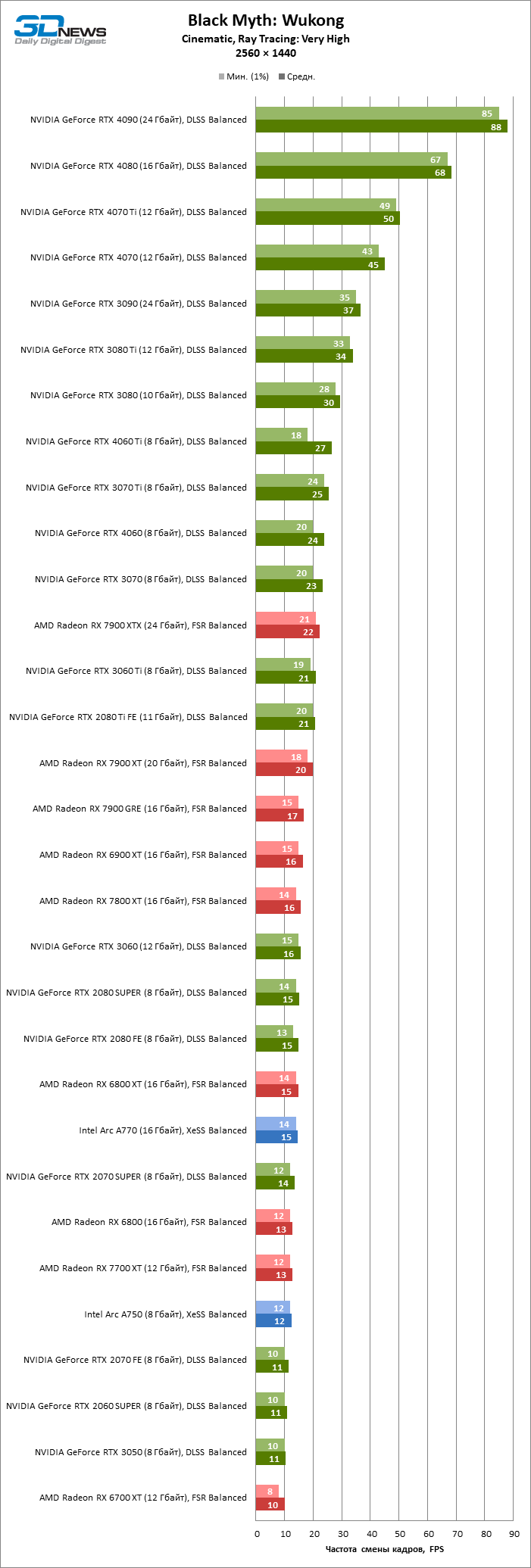
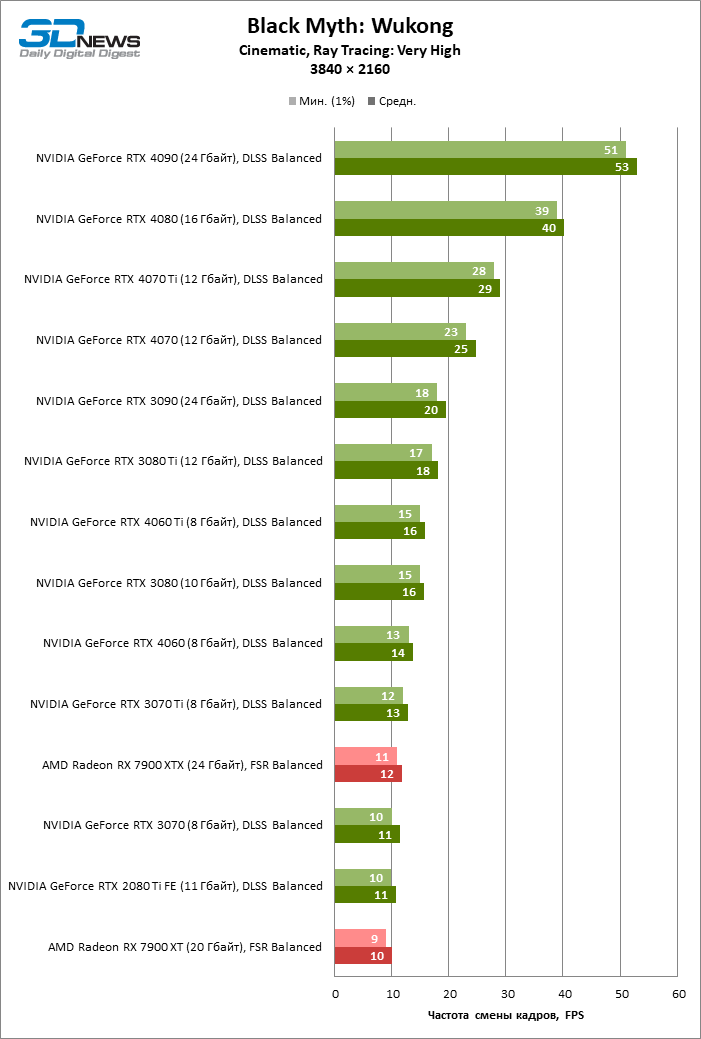
⇡#Tests with ray tracing, scaling and frame generation
Once you connect frame generation to DLSS with a Balanced scaling factor, the GeForce RTX 4090 along with the RTX 4080 achieve frame rates above 60 FPS at 4K resolution. In 1440p mode, the GeForce RTX 4070 achieved this result, but the GeForce RTX 4060 Ti did not reach the goal even at 1080p resolution.
Frame generation, already with the help of FSR, helps the “red” video cards even more, but only one of them reached 60 FPS – the Radeon RX 7900 XTX, and then in 1080p mode.
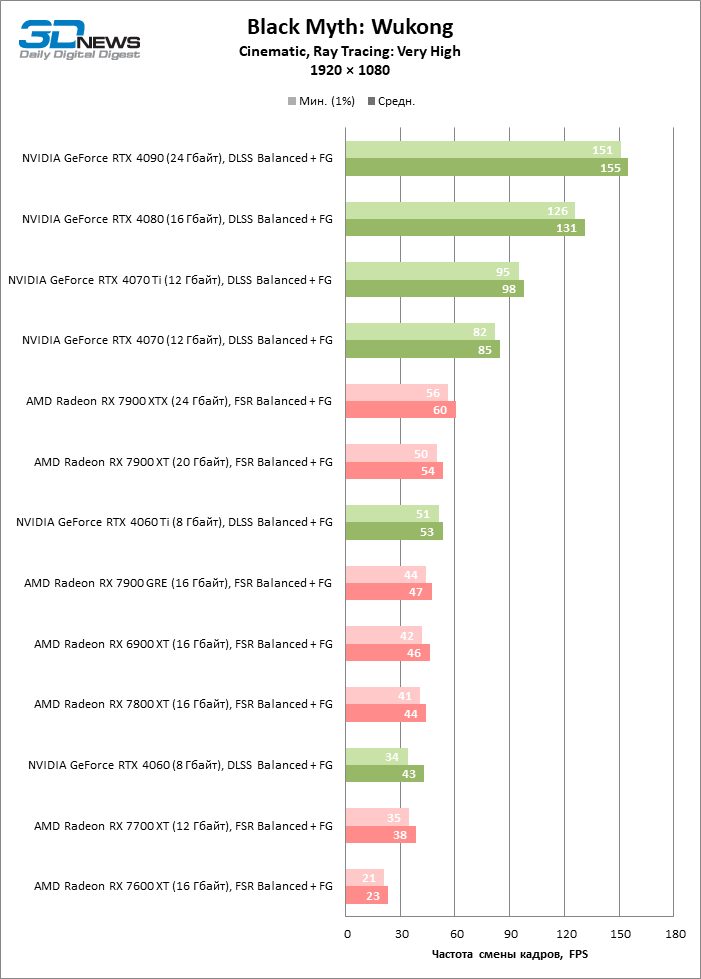
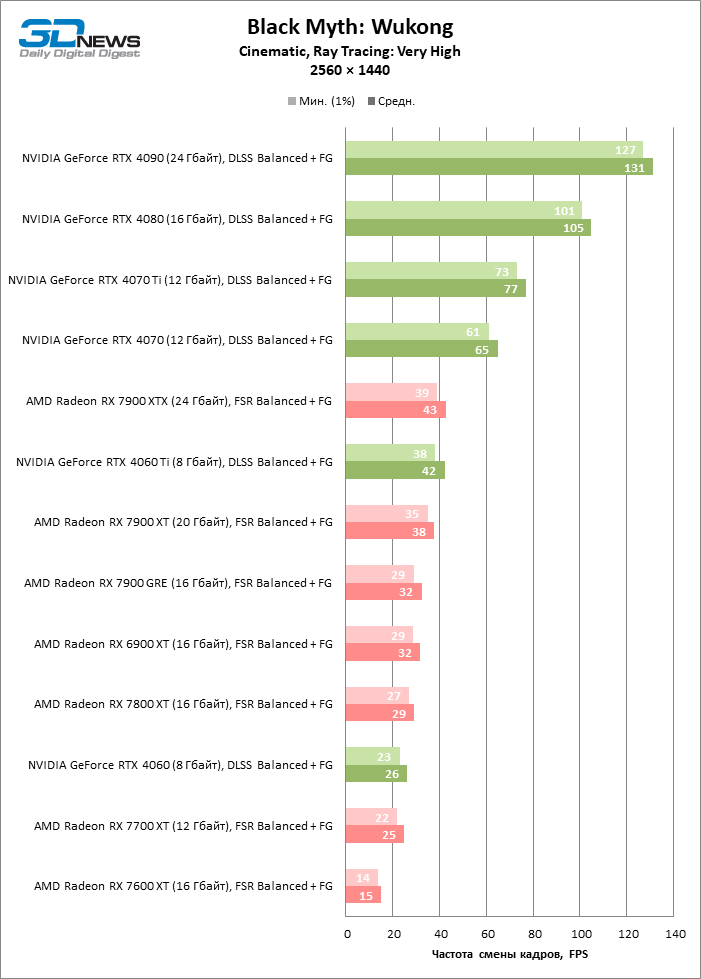
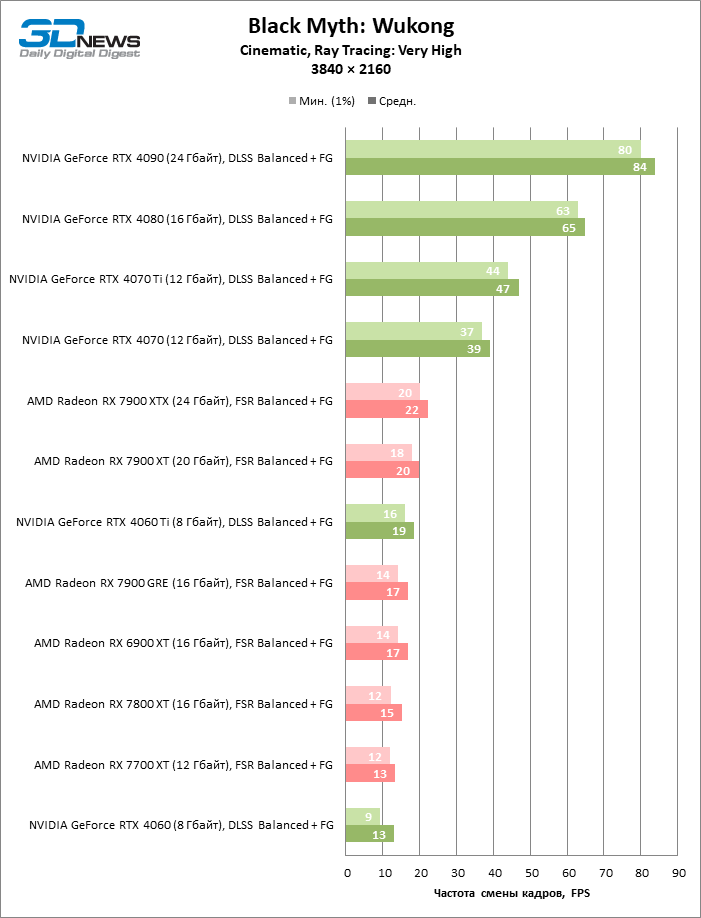
⇡#Conclusions
With the release of Black Myth: Wukong, there can no longer be any doubt about the direction 3D gaming graphics are heading. Powerful GPUs have reached the speed required to make ray tracing not an addition to rasterization, but a complete replacement for it. However, among all modern video cards, only one – the GeForce RTX 4090 – can withstand such a load with a comfortable frame rate, and then only in 1080p mode. This means that along with rasterization, rendering in native resolution is gradually becoming a thing of the past. Thanks to DLSS with the Balanced setting, frame rates from 60 FPS at a resolution of 1080p are available for the GeForce RTX 4070, and at 1440p – for the RTX 4080. Finally, in 4K, even users of the GeForce RTX 4090 can no longer do without frame generation, but this, in turn, allows reducing game requirements for one or two stages of the accelerator model range.
Black Myth: Wukong is the first title of this scale in a very long time that, by and large, rejects all GPUs from one of the leading manufacturers. In contrast to gentle hybrid rendering, full path tracing is beyond the capabilities of even the flagship Radeon RX 7900 XTX with moderate upscaling without frame generation. And although Black Myth: Wukong supports the third version of FSR, this game is not one of those games where scaling using the AMD algorithm provides at least acceptable image quality, and even less so with frame generation. However, the game itself, with its non-disabled clarity filter and flawed full-screen anti-aliasing method, also let us down. We hope that Game Science will not leave everything as is and work on these aspects of Black Myth: Wukong.
Path tracing aside, hardware recommendations are less straightforward, but Black Myth: Wukong remains an extremely demanding game, if not the most demanding of modern AAA projects. When rasterized, the performance of the “red” accelerators compared to their “green” competitors turned out to be lower than usual estimates, and yet the Radeon RX 7900 XT and RX 7900 XTX, along with the GeForce RTX 4080 and RTX 4090, provide a frame rate of at least 60 FPS at maximum speed. In 1440p mode, the flagship Radeon RX 7900 XTX and GeForce RTX 4080 approached 60 FPS, but in 4K even the GeForce RTX 4090 did not reach the finish line.
As for the older video cards under the Intel Arc brand (Arc A750 and Arc A770), they also lagged behind their usual rivals in their weight category (Radeon RX 7600 and GeForce RTX 4060) and, as a result, were locked into 1080p resolution with low graphics quality , and in this case it is truly “potato”.
⇡#Group tests of video cards in other games
3DNews regularly runs massive tests of graphics cards in popular games. If you want to know how modern models and devices of past generations work in other projects, the benchmark archive is at your service:
- Group testing of 42 video cards in Starfield: red light to “green” GPU;
- Group testing of 35 video cards in The Last of Us Part I;
- Your video card is out of date: testing Cyberpunk 2077 with path tracing;
- Group testing of 54 video cards in Atomic Heart;
- Group testing of 52 video cards in Call of Duty: Modern Warfare II;
- Group testing of 49 video cards in No Man’s Sky;
- Seven years later – testing new video cards in The Witcher 3: Wild Hunt;
- Group testing of 45 video cards in God of War;
- 44 graphics cards in Halo Infinite: who can handle the new Halo?
- Group testing of 46 video cards in Battlefield 2042;
- Group testing of 46 video cards in Far Cry 6;
- Choosing a video card for New World. Group testing of 46 models;
- DOOM Eternal with ray tracing and DLSS: group testing of 19 video cards;
- Group testing 45 video cards in Mass Effect Legendary Edition;
- Group testing 42 video cards in Cyberpunk 2077 – with new forces!
- Group testing 42 video cards in HitMan III;
- Group testing of 40 video cards in Cyberpunk 2077;
- Group testing of 44 video cards in Microsoft Flight Simulator 2020;
- Group testing of 43 video cards at Horizon Zero Dawn;
- Group testing of 48 video cards in Death Stranding;
- Group testing of 20 video cards in Half-Life: Alyx;
- Group testing of video cards in Minecraft RTX: heavy cubes;
- Anniversary testing of 49 graphics cards in GTA V: five years later;
- Group testing of 49 video cards in DOOM Eternal: mass shooting;
- MechWarrior 5: Mercenaries. Group testing of 44 video cards: in suspense;
- Group testing of 46 video cards in Star Wars Jedi: Fallen Order;
- Doomsday for gaming video cards: testing 42 models in Red Dead Redemption 2;
- Group testing of 44 video cards in Call of Duty: Modern Warfare;
- Group testing of 43 video cards in Borderlands 3;
- Group testing of 34 video cards in Control;
- Group testing of video cards in QUAKE II RTX: “Kvaock” slows down again.